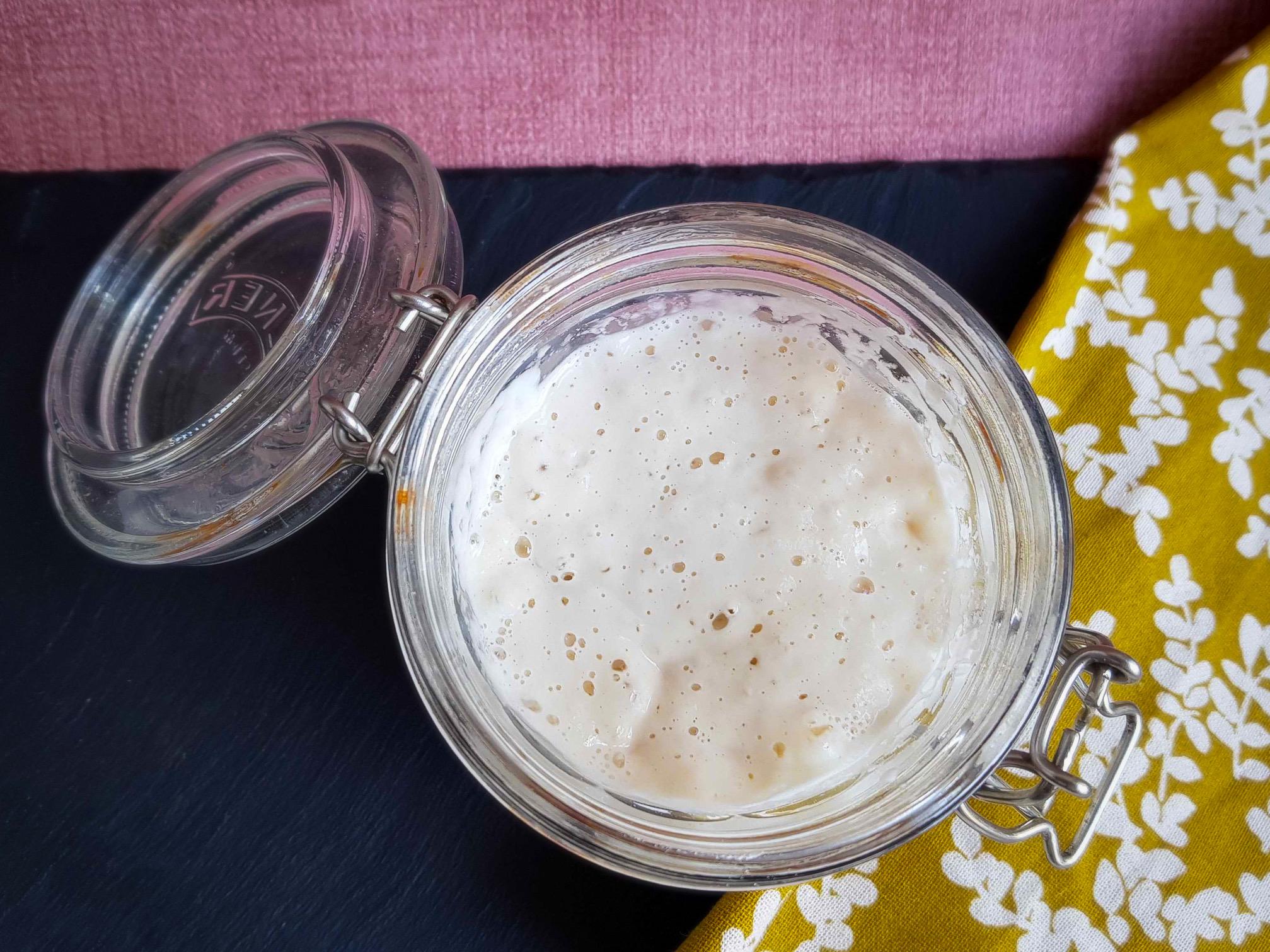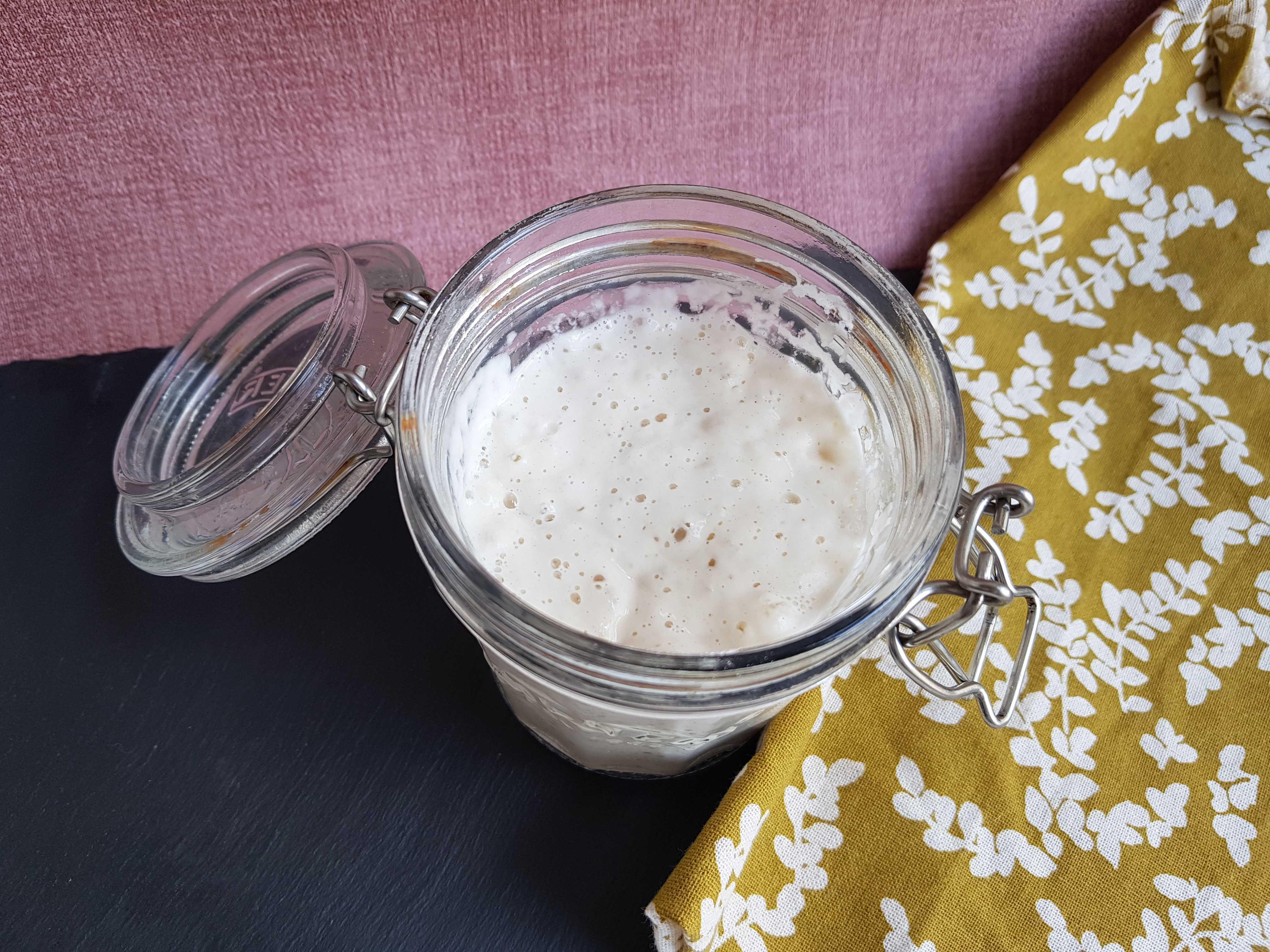
All-Purpose Flour Sourdough Starter


For the full experience, make this recipe with the Drop Recipes app.

recipe by Drop https://getdrop.com/
-
- Total Time
- 0mins
-
- Serves
- 4
-
- Calories
- 497
Making sourdough starter takes about 5 days. Each day you "feed" the starter with equal amounts of fresh flour and water. As the wild yeast grows stronger, the starter will become more frothy and sour-smelling. On average, this process takes about 5 days, but it can take longer depending on the conditions in your kitchen. As long as you see bubbles and signs of yeast activity, continue feeding it regularly.
Inspired by: https://www.thekitchn.com/how-to-make-your-own-sourdough-starter-cooking-lessons-from-the-kitchn-47337recipe updated 23 Jun 2021
Ingredients
-
- Plain flour
- 570 g
-
- Water
- 570 g
Tools
-
Plastic container
Step preview
- Add plain flour and water to a clean plastic container
- Stir with tablespoon until smooth
- Scrape down the sides and loosely cover the container with plastic wrap or a clean kitchen towel secured with a rubber band
- Place the container somewhere with a consistent room temperature of 70°F to 75°F (like the top of the refrigerator) and let sit for 24 hours
- Day 2: Take a look at the starter. You may see a few small bubbles here and there. This is good! The bubbles mean that wild yeast have started making themselves at home in your starter
- At this point, the starter should smell fresh, mildly sweet, and yeasty
- Add plain flour and water to the plastic container
- Stir with tablespoon until smooth
- Scrape down the sides, cover and place back in consistent room temperature or top of the refrigerator
- Place the container somewhere with a consistent room temperature of 70°F to 75°F (like the top of the refrigerator)
- Let sit for 24 hours
- Day 3: Check your starter. By now, the surface of your starter should look dotted with bubbles and your starter should look visibly larger in volume. If you stir the starter, it will still feel thick and batter-like, but you'll hear bubbles popping
- It should also start smelling a little sour and musty. If your starter doesn't look quite like in the description, don't worry. Give it a few more days
- Add water and plain flour to the plastic container
- Scrape down the sides, cover and place back in consistent room temperature or top of the refrigerator
- Let sit for 24 hours
- Day 4: Check your starter. It should be looking very bubbly with large and small bubbles, and it will have doubled in volume. If you stir the starter, it will feel looser than yesterday and honeycombed with bubbles. It should also be smelling quite sour and pungent. You can taste a little too! It should taste sour and somewhat vinegary
- Add water and plain flour to the plastic container
- Stir vigorously until combined into a smooth batter
- Place the container back in a consistent room temperature or top of refrigerator
- Let sit for 24 hours
- Day 5: If everything is looking, smelling, and tasting good, you can consider your starter ripe and ready to use! If your starter is lagging behind a bit, continue on with the Day 5 and Beyond instructions.
- Add plain flour and water to the plastic container
- Stir vigorously until combined into a smooth batter
- Scrape down the sides, cover and place back in consistent room temperature or top of the refrigerator
- Let sit for 24 hours
- Once your starter is ripe (or even if it's not quite ripe yet), you no longer need to bulk it up. To maintain the starter, discard (or use) about half of the starter and then "feed" it with new flour and water: weigh the flour and water, and combine them in the container with the starter. Stir vigorously until combined into a smooth batter.
- If you're using the starter within the next few days, leave it out on the counter and continue discarding half and "feeding" it daily. If it will be longer before you use your starter, cover it tightly and place it in the fridge
- Remember to take it out and feed it at least once a week







